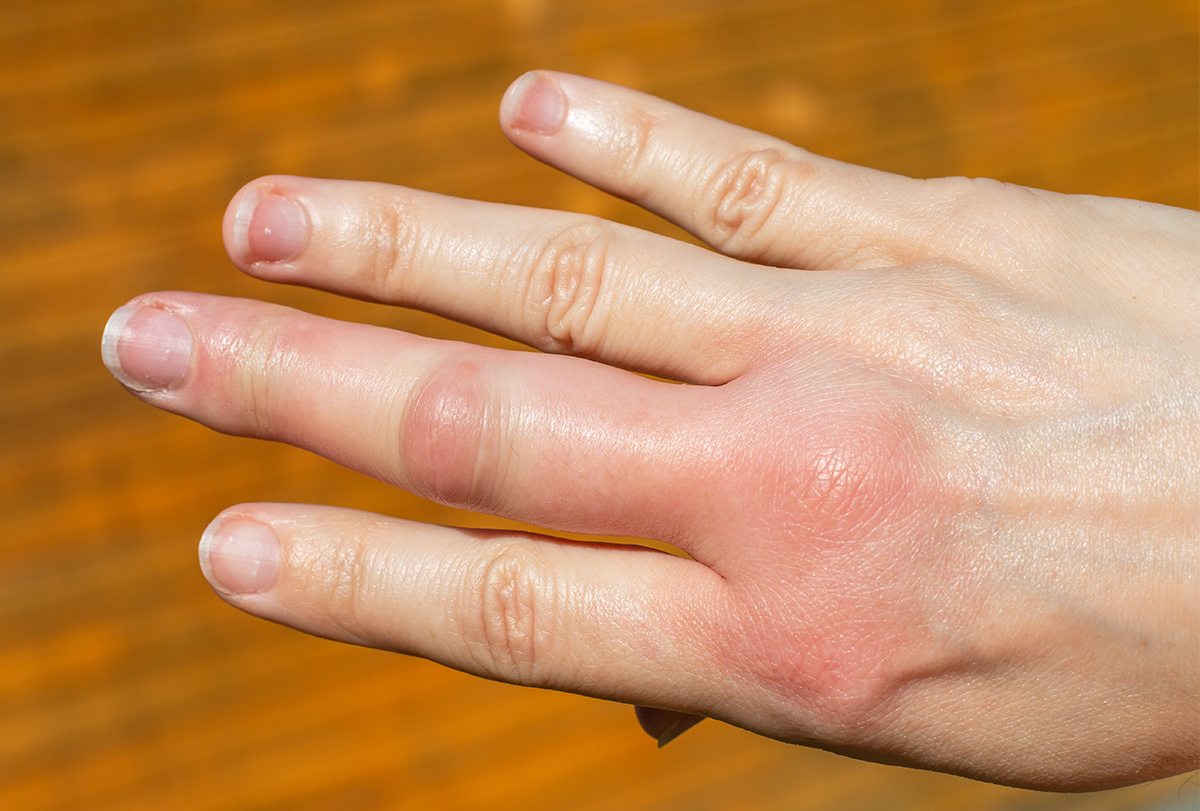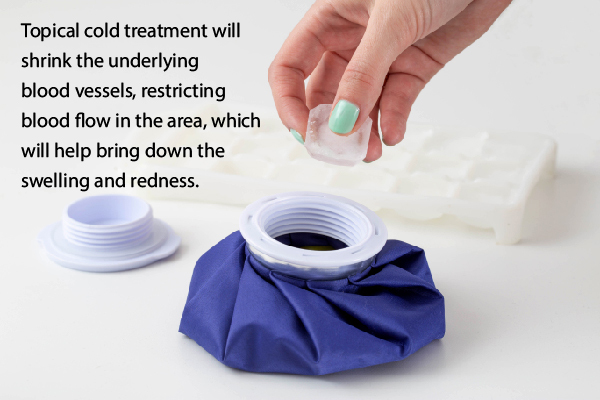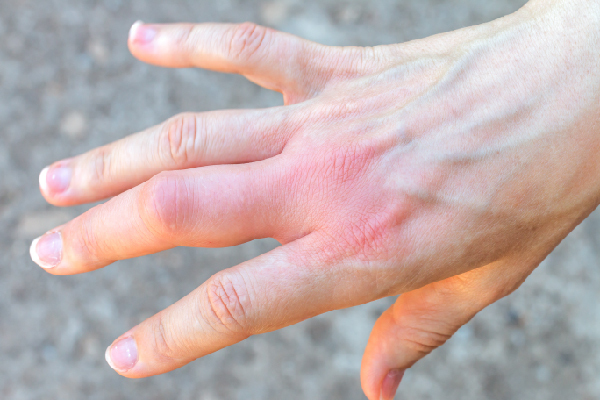In this article:
Bees and wasps belong to the same family of insects called Hymenoptera. Both have a sharp stinger attached to their rear end that they use to pierce into human skin and release toxins that trigger an inflammatory reaction and activate your pain receptors.

In most cases, the pain and inflammation are localized to the bitten area, but some people who are hypersensitive or allergic to the venom may develop severe systemic reactions that can be deadly if not treated promptly and properly.
In fact, stings from hymenopteran insects such as these two are responsible for most envenomation-related deaths in the United States, the majority of which occur due to immediate hypersensitivity reactions and anaphylaxis. (1)
Ways to Treat a Bee or Wasp Sting
The treatment for a bee or wasp sting depends upon the severity and type of reaction it causes.
The majority of victims develop localized pain and inflammation around the sting site, which can easily be treated at home and tends to resolve after a few hours.
Here’s the dermatologist-recommended way to treat such reactions:
1. Don’t panic
Wasps have a smooth stinger that remains intact even after the attack and can be used to sting you multiple times. The best way to avoid getting stung again is to slowly and calmly move away from the area.
2. Remove the stinger

Bees have a barbed stinger that gets stuck in the skin and left behind, so they can only use it once. The stinger has a venom bag attached to it that keeps releasing more toxins as long as it remains buried in your skin, resulting in extra pain and swelling.
So, the first thing to do if you get stung by a bee is to remove the stinger stuck in your skin to minimize the symptoms.
Carefully scrape it out with your clean fingernail or a piece of gauze, but don’t press or squeeze the area as this can cause more venom to spill out from the bag. For the same reason, you shouldn’t use a pair of tweezers to pull out the stinger as well.
3. Resist the urge to scratch
The bee or wasp venom causes intense itching but scratching will only make it worse. Plus, rubbing your sharp nails on the skin can cause further damage or tearing, thus providing easy entry to infection-causing germs.
Our fingers and nails also carry a lot of dirt and germs that can get transferred to the sting site and cause an infection. The friction will also exacerbate the pain and swelling. So, it’s best to avoid this undue skin trauma.
4. Clean the sting site
Wash the sting site with soap and running water to remove any venom from the skin as well as dirt, germs, or other debris.
5. Apply a cold pack

The topical cold will shrink the underlying blood vessels, restricting blood flow in the area, which will help bring down the swelling and redness. Plus, it will numb the underlying nerves to make you feel less pain and itching.
Using this intervention soon after the sting can help minimize the severity of the reaction. Its main purpose is to provide symptomatic relief until the venom is flushed out of the system and the inflammation subsides for good.
6. Take OTC medication
Getting stung by a bee or wasp can hurt a lot but nothing that cannot be managed with some common painkillers. Take acetaminophen or ibuprofen for quick pain relief, but make sure to read the label for proper dosage and directions of use.
You can also use a topical antihistamine, hydrocortisone cream, or calamine lotion on the affected area to curb the underlying inflammation and thereby soothe the redness, swelling, and itching.
7. Try herbal remedies

Some natural ingredients are credited with healing properties that can help ease your symptoms and promote faster recovery when applied to the sting site.
These include aloe vera gel, calendula (marigold) flowers/dried petals, crushed mint leaves, green tea bags, tea tree oil mixed with olive oil, and witch hazel water. They have long been used in traditional medicine for treating insect stings and are known to curb inflammation, fight germs, and facilitate skin repair.
However, keep in mind that there isn’t enough scientific evidence to establish the efficacy of these topical remedies in this regard.
Symptoms of a Bee or Wasp Sting
The following symptoms can be experienced when stung by a bee or wasp.
Local inflammatory reaction
Bees and wasps inject their venom under the skin, and the body reacts to it by launching an inflammatory response. The immune system identifies the toxins as a foreign threat and releases inflammatory substances to the sting site to neutralize the venom.
The resulting inflammation is usually limited to the sting site and manifests in the form of swelling, pain, erythema (redness), itching, and warmth and tenderness in the area. In some cases, the inflammation may spread to a larger area.
The severity and onset of these symptoms can vary from person to person.
Systemic allergic reaction
People who are allergic or sensitive to bee or wasp venom can develop extreme systemic reactions that are potentially fatal and require emergency medical treatment as well as long-term management to avoid recurrence. (2)
Here are some tell-tale signs of a systemic allergic reaction:
- Swelling that spreads to other distant areas of the body
- Coughing
- Tickling or tightness in the throat
- Tightness or heaviness in the chest
- Breathing difficulties or wheezing
- Nausea or vomiting
- Dizziness or fainting
- Sweating
- Hives covering large areas of the body
- Anxiety
If you experience any of these listed symptoms, seek immediate medical help. (3)
Tips and Treatment for Systemic Allergic Reactions to a Bee or Wasp Sting
If the systemic reaction only causes severe itching and swelling but no life-threatening symptoms, it can be managed with oral antihistamines that may be available without a prescription, but it’s best to consult a doctor for the appropriate dosage.
Antihistamines will help bring down the inflammation and relieve the swelling and itch, but they can also cause drowsiness, so act with caution after taking them. Refrain from driving, operating heavy machinery, or doing anything that can lead to accidents until the effect wears off. (4)
Severe systemic allergic reactions to a bee or wasp sting cause more serious symptoms that need to be treated promptly before the condition takes a fatal turn.
If you are experiencing a severe systemic allergic reaction for the first time, call an emergency medical service to get the help you need. This usually involves intravenous administration of life-saving drugs such as antihistamines, corticosteroids, and epinephrine as well as respiratory support if needed.
If you have already been diagnosed with an allergy to insect stings or have suffered anaphylactic reactions in the past, consider wearing a medical alert bracelet or some form of identification so that you can get immediate help in emergency situations. Plus, always carry a preloaded epinephrine pen to control anaphylactic or allergic reactions before they turn deadly.
You may also opt for allergen immunotherapy that will gradually desensitize your body to bee or wasp venom over several years and thereby reduce your risk of severe allergic reactions in the future in case you ever get stung again. (5)(6)
How Is a Bee Sting Diagnosed?
Doctors can diagnose a bee or wasp sting based on your symptoms and medical history, but they will need to conduct prick-puncture and intradermal tests to check if you are allergic to the venom or not. (7)
What Are the Preventive Steps for Bee Stings?

Here are a few ways to minimize the risk of getting stung by a bee or wasp while venturing outdoors:
- Don’t apply any fragrant products as they may attract insects.
- Avoid wearing bright clothes that will draw the attention of these insects.
- Always wear shoes or sandals and don’t walk barefoot on the grass.
- Wear full-coverage clothing to protect your skin as much as possible.
- Apply an insect repellent cream all over your bare skin.
- Don’t go to areas where hives and nests are present.
- If you notice a bee hive or wasp net near your home, get it removed by professionals.
- If an insect hovers close to you, don’t make any drastic or sudden moves. Stay calm and slowly move away from the site.
Complications Associated with a Bee or Wasp Sting
Bee or wasp stings can lead to the following complications in the absence of proper treatment or due to severe reactions:
- Secondary skin infection at the sting site that requires immediate antibiotic treatment
- Recurrent episodes of anaphylaxis in patients treated with antihistamines
- Serum sickness types of reactions that may last for 1–2 weeks after getting stung
- Kidney failure
- Cerebral edema
- Rhabdomyolysis
- Myocardial infarction
Can Aspirin Paste Be Used on Bee Stings?
Many websites suggest that it can be used, but there is no scientific proof and clinical evidence that aspirin paste is effective in reducing the pain and swelling associated with bee stings.
Moreover, a 2003 study found aspirin to be rather ineffective in this regard. (8)
Final Word
A bee or wasp sting can cause a lot of discomfort but is rarely serious. However, you must monitor your symptoms to make sure they are not spreading or worsening with time, as this could be the onset of a systemic allergic reaction.
- Was this article helpful?
- YES, THANKS!NOT REALLY


